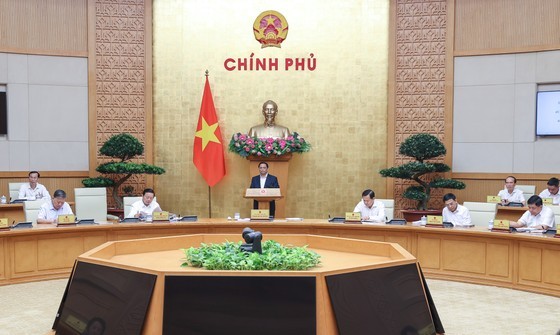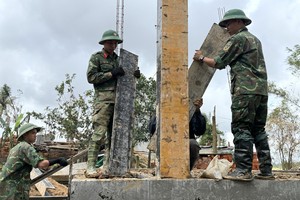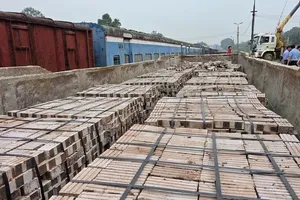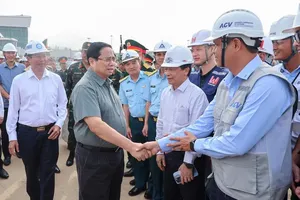 |
Deputy Prime Minister Tran Hong Ha has just signed Decision 500/QD-TTg approving the National Electricity Development Plan for the period of 2021 - 2030, with a vision to 2050 (known as the Electricity Planning VIII).
The Electricity Planning VIII aims to ensure national energy security, meeting the requirements of the country’s socio-economic development and industrialization. The country strives to successfully implement equitable energy transition associated with modernized production, smart grid construction, and advanced power system management in line with the trend of green transition, emission reduction, and scientific development technology of the world.
At the same time, the country will form an overall energy industry ecosystem based on renewable energy and new energy.
In particular, regarding the goal of ensuring national energy security, the master plan identifies the goal of supplying enough electricity in the country, meeting the goal of socio-economic development with an average GDP growth of about 7 percent a year and about 6.5-7.5 percent in the period 2021-2030 and in the period 2031-2050 respectively to ensure power supply.
The Southeast Asian country also strives that half of the office buildings and half of the residential houses will use self-produced and self-dissipating rooftop solar power (for on-site consumption, not selling electricity into the national electricity system by 2030.
For equitable energy transition, the power master plan VIII aims to strongly develop renewable energy sources for electricity production. In its orientation to 2050, the rate of renewable energy is up to 67.5-71.5 percent while it will control about 204-254 million tons of greenhouse gas emissions from power generation in 2030 and about 27-31 million tons of greenhouse gas emissions from power generation in 2050.
Regarding the development plan, the master plan clearly stated to accelerate the development of power sources from renewable energy such as wind power, solar power, and biomass power. Additionally, it will continue to increase the proportion of renewable energy in the power source structure and production power.
At the same time, the country will exploit the maximum potential of hydropower sources while taking heed of the environment, forest protection and water source security; Vietnam’s total potential of hydropower is about 40,000 MW. Subsequently, competent agencies must carefully study the expansion of existing hydropower plants to reserve capacity when exploiting hydroelectricity in irrigation lakes and reservoirs to take advantage of hydroelectricity.
For coal-fired power plants, the master plan clearly states that responsible agencies will continue the implementation of only plants already included in the revised Power Master Plan VII and under construction until 2030. In the plan, fuel factories that have been operating for 20 years will be converted into biomass and ammonia plants. Accordingly, by 2050, coal will be phased out for electricity generation, completely switching fuels to biomass and ammonia.
With gas-fired thermal power plants, priority is given to the maximum use of domestic gas for power generation.
According to the plan, between 2021 and 2030, the country has spent US$134.7 billion for the development of power sources and transmission grids. In its orientation for the period 2031-2050, the spending for the development of power sources and transmission grid is equivalent to $399.2 - $523.1 billion. Of the total amount, about $364.4-$511.2 billion will be for power sources and approximately $34.8-$38.6 billion will be for the transmission grid.
The Government requested the Ministry of Industry and Trade to submit the revised Electricity Law and the Law on Renewable Energy to the government and the National Assembly in 2024. The Ministry should also submit policies on direct electricity purchase and sale to the government.
People's committees in provinces and cities shall select investors for power projects, and arrange the land fund for the development of electricity works in accordance with the provisions of law and closely coordinate with investors in site clearance, compensation, migration and resettlement for power source and grid projects according to regulations.
























